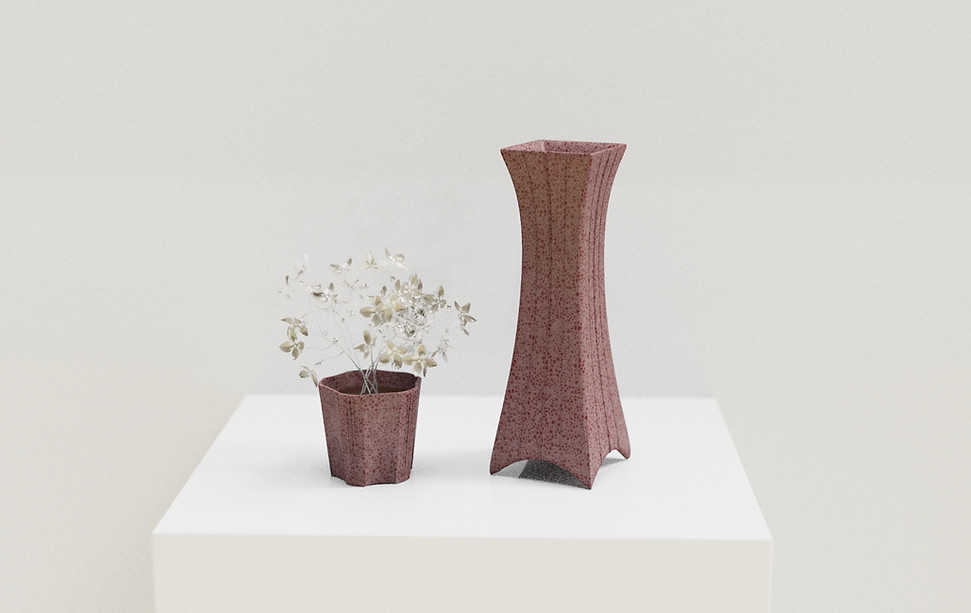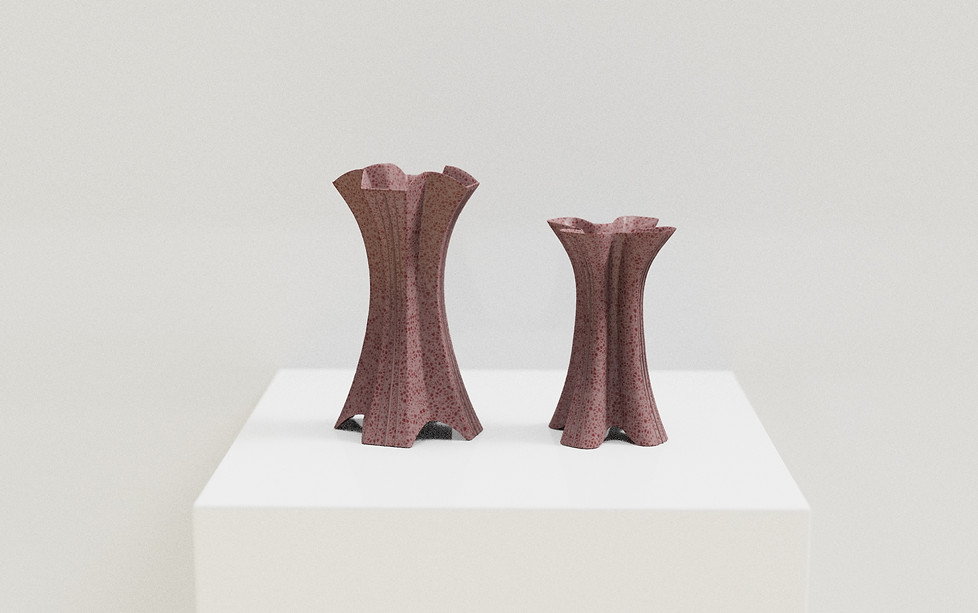64/72 Collection
In my last semester at RISD, I took a Production Ceramics course. Mid-March, our school went completely online due to the COVID-19 pandemic. What would have been a hands-on, materials-based final project had to be completed instead through the use of Rhino 3D, Keyshot and Zoom calls.
The 1964 and 1972 Olympics were held in Tokyo, Japan and Munich, Germany respectively. Front and center on the world stage, both countries had a unique opportunity to change the world's perception. The architecture of the countries' Olympic stadiums, designed by Kenzo Tange in Tokyo and by Frei Otto in Munich, served as conduits through which they rebranded their present and visualized their future.

Tokyo National Gymnasium

Munich Olympiastadion
Reference Images
Visual Ideation







Initial Renders
Final Collection and Individual Pieces

The final object lineup features seven different objects (from left to right):
A pitcher, a medium vase, a decorative display bowl, a tray, a small pot, and a small and large size vase.



I investigated different surface treatments, trying to create a realistic looking rendering. I wanted to use white glaze-coated terra cotta, traditional Japanese raku-firings (the rust colored pieces), and a dark, metallic surface as well.
I particularly liked the effect that the "rusty-Raku" achieved.
I think the pieces, when paired together, are both dramatic and peaceful, reflecting the post-WWII period and the stadiums themselves.


Weightless, tensile forms and textured striations reference both the Yoyogi Gymnasium and the Munich Olympiastadion's cable structures.

Some forms, like this tray, are inspired entirely by one stadium. This one references the Olympiastadion's draping, curved architecture.


This bowl is one of my favorites. It would require some extra handwork after being de-molded to achieve the form I am imagining here. I think it would be lovely as a centerpiece bowl for display.
While I didn't have time to render the bottom of every single piece, I did consider what they might look like.
Glaze (which becomes molten in the firing process) cannot touch the kiln shelf or the piece will become stuck. This means special attention must be paid to how the glaze is treated around the "foot" of the piece.
I think seeing the clay body shine through also gives the renders life.
















